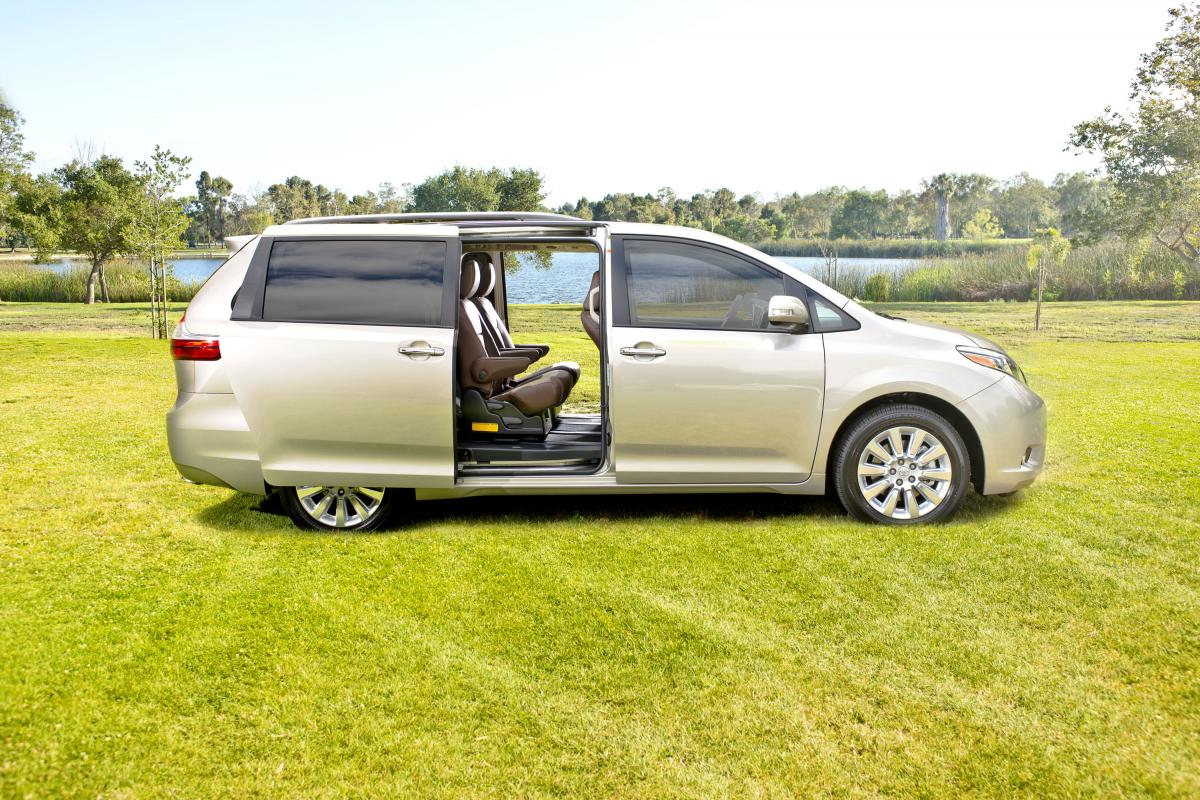
A Toyota Sienna sliding door lawsuit alleges consumers purchased and leased 2011-2017 Toyota Sienna minivans with alleged defects in the sliding doors that cause the doors to experience problems opening and closing.
Toyota recalled 834,000 Sienna minivans in 2016, but the lawsuit alleges the recall was no more than an admission that there are problems with the sliding doors.
In recall documents filed with the National Highway Traffic Safety Administration, Toyota said the motor circuits in the sliding doors could become overloaded and lead to fuse failures. With an open fuse, the door could open while driving if the door latch is in an unlatched position.
In January 2014, Toyota received a dealer report indicating the left side sliding door would not close properly in a 2014 Sienna. The dealer found the fuse for the sliding door motor had activated and the door cable was bent and not attached to the latch mechanism in the front lock assembly.
Between February 2014 and mid-April 2015, Toyota received an additional four reports indicating that sliding doors would not close/latch properly and the fuses for the sliding door motors had activated. An inspection of the vehicles and investigation of the recovered parts found binding in the rear lock mechanisms of some vehicles possibly caused by corrosion or debris in the rear locks.
Toyota found the sliding door motor could stall when the door was operated during conditions when there were problems that impeded the opening of the door, such as when the door was frozen with ice. This could generate high current in the door motor circuit and result in the operation of the fuse for the door motor.
If the fuse is activated with the sliding door latch mechanism in an unlatched position, the door may not close properly if opened or could open while driving.
According to the plaintiffs, the sliding door assemblies experience failures of the front and rear latch circuits used to secure the doors to the center and rear pillars to the frame of the minivans.
Other problems include failures of the circuits that open and close the doors, failures of the pulleys/cables in the doors, failures of the door switches, failures of the controller assemblies and failures of the door hinges. Additionally, the sliding door cables allegedly bind and creates a popping noise during operation.
The lawsuit says the problems are a serious safety hazard because occupants can't quickly leave the rear seats in an emergency when the sliding doors won't open. Occupants can also be ejected from the minivans if the sliding doors open while the Siennas are moving.
On May 24, 2011, Toyota issued a technical service bulletin (T-SB-0044-11) entitled “Power Slide Door Abnormal Operation” which advised dealers that an updated power sliding door motor/electronic control unit assembly was created for 2011 Sienna models due to problems such as partial opening and audible pops when the sliding doors were opened with the exterior handles.
Then on November 14, 2013, Toyota issued another bulletin (T-SB-0170-13) called “Power Sliding Door Inoperative Using Overhead Switch” to its dealers regarding the sliding doors for the 2011 Sienna.
The bulletin said:
“Some 2011 model year Sienna vehicles may exhibit a condition in which the power sliding doors or power hatch are inoperative from the overhead console switch or require excessive pressure on the overhead console switch to operate.”
Again on April 10, 2017, Toyota issued a third bulletin (T-SB-0208-17) entitled “Power Sliding Door 25A Fuse Open” that said 2011-2016 Sienna vehicles “may exhibit Sliding Door Front and Rear latches simultaneously NOT latching due to the PSD 25 Amp fuse becoming open.”
Toyota told technicians to check upper and lower slide rails for any obstructions, check the condition of weather-stripping and center hinge and to replace the OE 25-amp latch motor assembly fuse with a larger capacity 30-amp unit.
The fuses talked about in the recall and bulletins are used to prevent current overload and overheating of the wiring and electrical components. But the plaintiffs claim by increasing the amperage draw of the latch motors and current load in the wires, Toyota diverted from their established wiring blueprints and increased the likelihood of internal sliding door components overheating and catching fire.
The Toyota Sienna sliding door lawsuit was filed in the U.S. District Court for the Central District of California, Western Division - Tonya Combs, James Tinney, Melissa Jugo Tinney, Crystal Gillespie, Melissa Stalker and Joseph C. Harp Jr., et. al. v. Toyota Motor Corporation, Toyota Motor Sales, USA and Toyota Motor Engineering & Manufacturing North America, Inc.
The plaintiffs are represented by Monteleone & McCrory LLP, Dicello Levitt & Casey LLC, Beasley, Allen, Crow, Methvin, Portis & Miles, P.C., and Hendrickson & Long PLLC.
This is the second Toyota Sienna sliding door lawsuit filed in the past month. In June, a separate Sienna class-action lawsuit was filed in Missouri alleging Toyota waited to order the sliding door recall in an attempt to allow the viable warranty claims of early buyers to lapse.
Read owner-reported complaints about Toyota Sienna minivans: